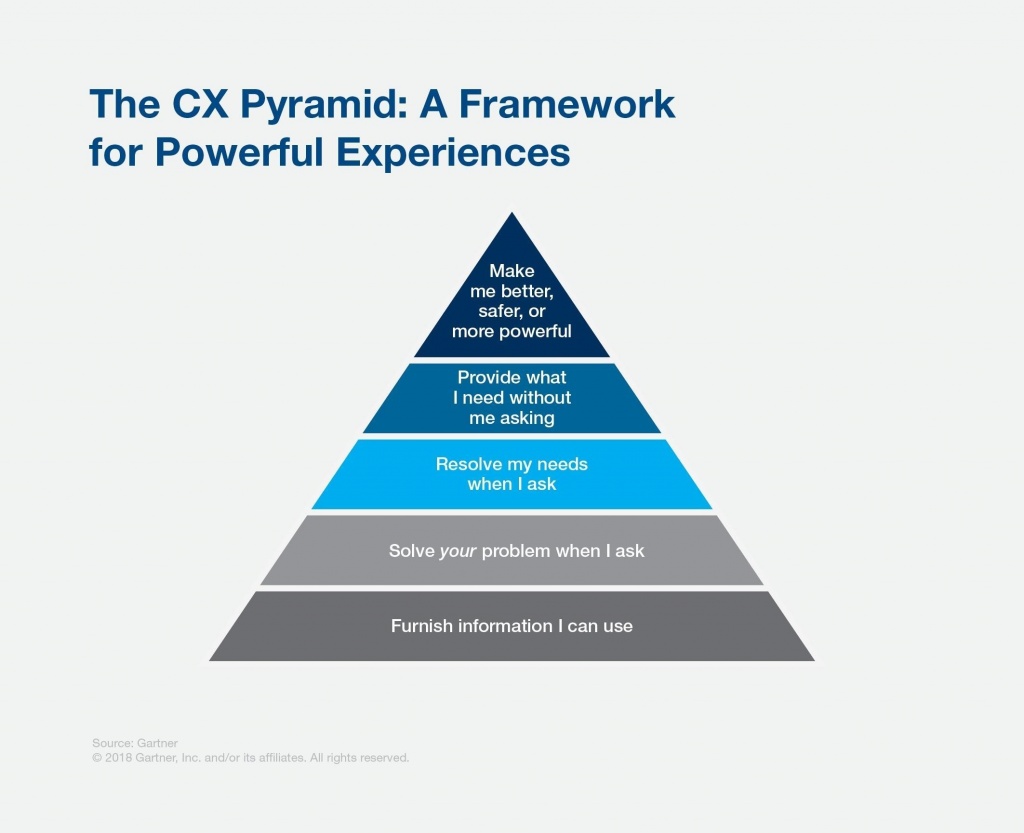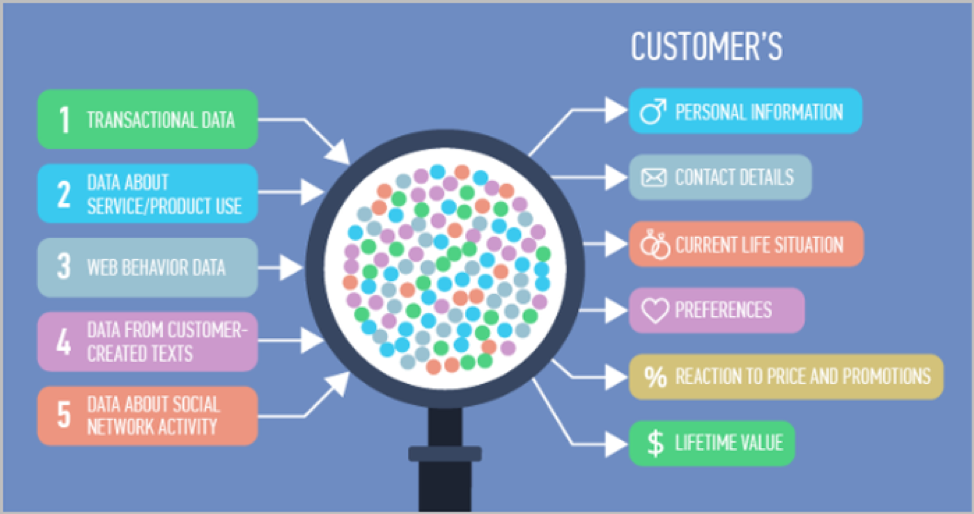According to a Forbes Insights report titled -“Proving the Value of CX (Customer Experience),” 74% of customers make a purchase from a brand based on the experience alone. This powerful statistic highlights the importance of Customer Experience (CX) in influencing purchase decisions.

Identifying Your Customer
For a truly effective data-driven CX system, your customer and the customer experience data must align to deliver as per expectations.
For this purpose, you must create an ideal client profile (“ICP”), or buyer persona. The ICP defines a hypothetical client, who gains maximum value from the business’ products/service. Your best customers are easiest to sell to, have a higher Customer Lifetime Value (CLV/CLTV), and less likely to churn. Given their importance, you need to weave an experience that would appeal to them the most.
Subsequently, identifying your customer will also lend insight into the most effective KPIs for measuring data-centric customer experience.
SEE: How Analytics can create a Better Customer Insurance Experience
The Importance of Data
Data plays a crucial role in defining the end-to-end Customer Experience (CX). Businesses should harness data and leverage to nurture loyal customers. Too often though data is ignored, underutilized and overlooked, as organizations make key decisions more on gut feel and experience rather than using a data driven approach to underpin strategy.
Here’s how data can add value to the overall customer experience:
- Leaves room for personalization
- Allows rapid testing of strategies that work (and those that don’t)
- Improves customer targeting
- Increases prospects at the top of the funnel
- Faster response
- Provides real-time actionable customer insights
- Smoothens customer onboarding
- Outlines a forward-facing journey
- Increases lifetime value of a customer
Profiling your customer should be straightforward. You should have the customer experience data on the target demographics, purchasing patterns, customer behavior, and loyalty. However, consolidating this information for customer analytics is extremely crucial
As customer experience data is collected from numerous customer touchpoints, your business needs to have a centralized repository of customer data. Having a robust master data management (MDM) or a powerful customer relationship management (CRM) system, helps automate data storage and management. It allows businesses to have a holistic view of what constitutes as a “client” from your business’ perspective.

Capturing, analyzing, and measuring your data is critical. You should comprehensively audit and quantify the data your current systems and processes capture to generate customer analytics. You need to:
- Scrub your data, avoid duplications, ensuring its robustness and quality,
- Define the Key Performance Indicators (KPIs) that will dictate the effectiveness and efficiency of the CX experience. KPIs for measuring customer analytics include:
- Direct Traffic
- Customer Acquisition Rate
- Conversion Rate
- Customer Churn Rate
- Net Promoter Score
- Cart Abandonment Rate
- Customer Satisfaction
- Dispute Redressal Time
- Customer Referrals
- Share of customer wallet
CUSTOMER DATA FILE

However, evolving to a complete data-driven CX model, with a centralized repository of customer data, is not as easy as it sounds. Organizations need:
- A robust, well-defined plan to finance, operationalise and drive the shift.
- An understanding of current process and data and a gap analysis to get from where the organization is to where it needs to be (data, process and skills audit)
- To consider the cost of, and the time required, for a successful implementation.
Here’s an overview of the entire process of financing and operationalizing a full data-driven customer experience implementation:
Implementation Planning
The first stage of adopting any data-driven module is to define a roadmap. Before you start, ask yourself the following questions:
- What are your CX goals? Do they align with the mission and vision of the mandate? Have you set clear measurable objectives for the implementation?
- What are the best strategies to drive CX to reach these goals?
- What functions/groups within the organization need to buy in, support and/or drive the implementation? What interactions and endorsements will be needed to reach the end goals?
- What are the overall requirements in terms of human resources, technology, and financial components?
Answering these questions will help you lay the foundation for planning out how to implement data-driven customer experience solutions.
One of the gravest mistakes that organisations make is ascribing data-driven CX digitization as a solely IT initiative. A full scale CX implementation will likely require an organization-wide commitment. It may be driven by the CMO or CIO for example but will require the buy in of the whole leadership team and the active support and involvement of the COO/CFO. Organizations must therefore adopt a holistic outlook, not just limited to the core implementation sponsors, ensuring cross functional commitment and participation to drive a successful outcome.

And approach the implementation as a change management challenge/opportunity.
Here are a few pointers:
- Since the entire project may take a considerable amount of $ as well as organizational effort, consider tackling the implementation in measurable, quantifiable phases, with clear success criteria set out. Funding should mirror the phases.
- Have a dedicated budget line to fund the implementation. This makes it easier to allocate funds and measuring progress.
- Scope out the investments and categorize them into:
- Direct and indirect external costs, such as hardware, software, subscription costs, etc.
- Direct and indirect internal costs, in the form of resources that need to be allocated.
- Split into one off project costs vs ongoing annual commitments
- Budget needs to be flexible to accommodate unanticipated costs or changes in direction during implementation by creating a non-allocated contingency fund of 10%-15% of the total project budget
Measuring Impact Across the Organization
With Data-driven CX implementation, you need to be able to measure its impact throughout the organization. While finalizing your plan, review the impact of the change on:
- Business processes, especially those that will have to pivot according to the new workflows.
- Historic and predictive reporting and KPIs
- Employees and company culture including changes in roles, functions, and responsibilities.
- Assessment of workforce performance and contribution including performance-based compensation based on KPIs
- Internal and external stakeholders, suppliers, clients, and other third parties.
Conclusion
Using data to enhance your customer experience can help build long-lasting customer relationships, and deliver exponential growth for your business, boosting revenue and increasing breadth and depth of the customer base to deliver significant long-term ROI. If you’re looking for an expert solutions provider who can help implement an all-round data-driven CX system, connect with my friends at Suyati. Suyati helps in implementing cutting-edge Customer Experience database solutions, offering both standalone and integrated packages, offering a range of end-to-end data-driven services that make the collection, analysis, and interpretation of customer experience data more streamlined.
And if you are either a CFO/COO tasked with leading a complex CX implementation or are working with key project sponsors within your organization
or
you want to know how to talk to your CFO/COO or even CEO/Board holistically about operationalizing a CX implementation then I’d be happy to chat with you.
Author Bio
Simon recently started working with Suyati as a Strategic Advisor. He is an experienced CFO/COO with significant international experience in star-ups, fast growing/entrepreneurial and reengineering situations. He has held strategic leadership positions for the last 25 years in Advertising, Media Information and Technology, and Professional Consulting Service Organizations. He has strong financial, analytical and managerial skills and is accustomed to solving complex business issues. Amongst his areas of expertise are Operational Financial Management which includes building multinational operations, re-engineering strategic planning and development, leading and integrating M&A, designing and implementing comprehensive MIS systems and KPIs, including NetSuite/Open Air.

